
Guests
- Mari Carmen Egurrola TotoricaSurvivor of Guernica bombing in 1937. She’s lived in Boise Idaho since the 1950s.
- Patty MillerExecutive Director of the Basque Museum and Cultural Center in Boise, Idaho.
Seventy-two years ago this Sunday, in the midst of the Spanish Civil War, on April 26th, 1937, the Basque town of Guernica was carpet bombed by Fascist Italian and Nazi German forces. Three-quarters of Guernica was destroyed, and as many as 1,600 civilians were killed. Boise, Idaho is home to one of the largest Basque populations in the United States. We speak with a survivor of the Guernica bombing and with the director Basque Museum and Cultural Center in Boise. [includes rush transcript]
Transcript
JUAN GONZALEZ: Seventy-two years ago this Sunday, in the midst of the Spanish Civil War, on April 26th, 1937, the Basque town of Guernica was carpet bombed by Fascist Italian and Nazi German forces. Three-quarters of Guernica was destroyed, and as many as 1,600 civilians were killed. The attack was immortalized in Pablo Picasso’s Guernica, one of the most iconic paintings of the twentieth century.
Franco, who ruled Spain as a fascist dictator for nearly forty years, from 1936 until his death in 1975, claimed the attack on Guernica never took place and was, in fact, Republican propaganda.
AMY GOODMAN: Well, Boise, Idaho is home to one of the most concentrated Basque populations in the United States.
I’m joined now by two guests. Mari Carmen Egurrola Totorica is seventy-seven years old. She was a member — she is a member of the Basque community here and a survivor of the Guernica bombing. Patty Miller is the executive director of the Basque Museum and Cultural Center here in Boise.
We welcome you both to Democracy Now! Mari Carmen —-
MARI CARMEN EGURROLA TOTORICA: Yes.
AMY GOODMAN: What happened in 1937? You were how old at the time?
MARI CARMEN EGURROLA TOTORICA: Five years old.
AMY GOODMAN: What do you remember?
MARI CARMEN EGURROLA TOTORICA: I remember being -— earlier in the afternoon, I hear the bell rings. I mean, the church bell rings. And I say to my mother, “What’s going on? This is not a holiday, you know?” But, “No, no, it’s OK. It’s OK.” And the next thing I know, it was herself telling me, “Let’s go, let’s go, let’s go. We have to get out of the house.”
And so, my mother and my eleven-month-old brother, we just run from the house, and we just went through — there is a church, Santa Maria. Behind there, there were some a little bit high hills. And we tried to escape and kind of be somewhere, you know. And we went to the — I don’t know. There is some little chestnut trees, little tiny ones, and we stayed there. And I remember, right from there, then everybody running somewhere and my mother telling me to stay there, to be quiet, to stay there and to pray. And I say, “I already prayed.” “Pray more. You have to pray more.”
And then the planes start coming. And they were, you know, just really close to us, very close to us. And I was kind of scared. Then they started throwing things, and I realized they were — the most scary thing that, I mean, I never forgot this one thing, that I saw people coming towards where we were, like a group of people, and they throw some bombs, and there was a big explosion. You know, I mean, dust and — I say to my mother, “What happened? What happened?” She said, “Don’t worry. Don’t worry.” But, of course, people die right there. And then, the next three hours, we know that I have to be sit and not moving, because they were throwing bombs, you know, really close to us. And that’s the way we were for three hours.
Then after that, we can’t go back to Guernica, because — we can’t go because it was on fire. So we went from there to a little farmhouse. I mean, the closest one, it was like about a mile, this farmhouse, that my mother know the lady because she was delivering us milk every day from that place to my home town. But in the meantime, between time, I mean, when we were going there, walking, there was one body on the floor, another body. And I said, “What’s the matter with them? What happened?” And she said, “Don’t — don’t think about it. Just let’s go. Ignore it.” You know what I mean? But I was five years old, and I see like that. It was dead people.
AMY GOODMAN: I wanted to talk about the significance then of Pablo Picasso’s capturing of the horror in Guernica with his famous painting by that title, Guernica. When you saw it, how did you feel?
MARI CARMEN EGURROLA TOTORICA: I don’t know. Kind of scared, confused. I said, “Oh, I don’t know, what is this?” You know, I mean, I couldn’t understand from the picture. Now I know a little bit, but not quite.
AMY GOODMAN: Patty Miller, you’re the head of the museum here. The significance of Guernica, what happened and the painting? Because I remember back in 2003, in the lead-up to the invasion of Iraq, the incredible moment — you know, there is a replica of the painting in the United Nations, and the US had the painting draped, because that is the backdrop to the US politicians speaking out on the war. And, well, they saw the power of it. They actually had it draped, because it’s the image of the horror on not only people’s faces, on animals’ faces. Maybe a lot more truth was said there than what was being uttered into the microphone.
PATTY MILLER: That’s possible. I mean, you know, to bomb a civilian population, and it was on a market day. And so, Picasso tried to capture just the chaos in that town. You know, it was just everyday market. People were down from the hills. And I think that he did capture the horror of war.
JUAN GONZALEZ: I’d like to ask Mari Carmen Egurrola, your reaction over the years, as you were growing up, to the Franco government denying that this event had even taken place?
MARI CARMEN EGURROLA TOTORICA: Do you mean — I supposed to tell you how I feel?
JUAN GONZALEZ: Yes. Well, how you felt when you — you obviously must have heard that he was denying that it had even taken place.
MARI CARMEN EGURROLA TOTORICA: Yeah. Well, it was very hard, very hard, you know. It’s not that I enjoy now saying these things, but I think everybody should know when something like that happened. And what people had to go through is very hard.
You know, for one day that I was very happy five year old, you know. Then everything changed. My life. We lose every single thing we had in the house. We had a little store and everything. And then we became — you know, just no house, no place to go. We can’t even go to Guernica. We went to Bilbao to a concentration — I mean, not concentration camp, but, you know, like a place that refugees go, refugees camp, yeah, and we stayed there for a week or so, and then, from there, still can’t go to Guernica. And we then — you know, we went to another place. And we’ve been living for about three years out of Guernica.
It was maybe, yeah, mostly because there were — most of the houses destroyed, but not quite. It was also political things, too. It was an apartment, and my father asked this guy, “Can we use your apartment?” I mean, “Can we rent it?” And he says, “No, you are not Franco’s friend.” “How do you know I’m not Franco’s friend?” Whatever, he didn’t rent it. So he had to live in another little town, which my father coming back to Guernica. He was a mailman, so he had to go back and forth by the bus. And my mother, even to buy groceries, had to go for about three miles whatever she wants to go — I mean, buy.
AMY GOODMAN: Mari Carmen, I wanted to ask you —-
MARI CARMEN EGURROLA TOTORICA: Yes.
AMY GOODMAN: —-about this excerpt from a film about the Spanish Civil War. It’s called Into the Fire: American Women in the Spanish Civil War. It’s directed by Julia Newman. In this clip, Virginia Cowles, a correspondent for the New York Times, who was shown around Guernica soon after the bombing, describes what had happened to the place. Her words are read by an actor.
VIRGINIA COWLES: [read by an actor] When I arrived, a press officer asked if I had been subjected to the Guernica propaganda, declaring that everyone knew that Guernica was not bombed by the whites, but burned by the reds.
Guernica was a lonely chaos of timber and brick. One old man was inside an apartment house that had four sides to it, but an interior that was only a sea of bricks. I asked him if he had been in Guernica during the destruction. He nodded his head and declared that the sky had been black with planes. “Aviones,” he said, “italianos y alemanes.” The press officer turned pale. “Guernica was burned,” he contradicted. The old man stuck to his point, insisting that after a four-hour bombardment, there was little left to burn. The press officer moved me away. “He’s a red,” he said.
When later in the day we ran into two staff officers, he brought the subject up. “Guernica is full of reds,” he said. “They all try to tell us it was bombed, not burned.” “Of course, it was bombed,” said one of the officers. “We bombed it and bombed it and bombed it. And bueno, why not?” The press officer never mentioned Guernica again.
AMY GOODMAN: Your response to this, Mari Carmen?
MARI CARMEN EGURROLA TOTORICA: It was bombed. I did see bombing. It was from where the little hill that we were, and it was across — it was another hill. And that’s where they were stationed. And from there, they were throwing things, I saw, just going, going, because the town, it was right, you know, like a half mile from where we were. It was the whole town. And it was in a little bit deeper, lower. You know, we were higher, so it was lower.
And I was remembering all these fires and everything. My mother recognized — she told me, “Well, the house is burning.” Of course, you know, I mean, I didn’t think too much, because I was five years old and didn’t know what this is. But it was bombing. And we — I mean, how’s that be burned without throwing bombs or anything like that?
Of course, there were a lot of planes going off, you know, a lot of them. Some of them really, really low, too. That’s why we were not even moving. I don’t think we were even talking to the next little tree. In the bottom of the little tree, there were more people on the other side in all the — but my mother was not even talking to them, because we — looks like we thought they might hear from up above. You know, so we were really, really scared and shaking.
JUAN GONZALEZ: I would like to ask Patty Miller — you’re the executive director of the Basque Museum and Cultural Center in Boise. How did so many Basque end up in Idaho? And how do — do they continue to follow the continuing problems of the autonomy movement in Spain by the Basque people?
PATTY MILLER: Yeah. Most Basque came this way for economic reasons. The family home would go to one child, and for that reason, many of them would leave and go to South America, North America, Australia, looking for work. And a job opportunity that was here in the American West was herding sheep. And so, they started coming out as usually individual men. Some were married when they came, left their families to come and work. Others found jobs as young men out here. And then, as they were able to, some went back and were married or brought their wives. And a boarding house system was established, and that brought a lot of women over to this area as well.
There is a lot of contact between the two areas, here in Idaho and the Basque region, contact with the Basque government. Many people stay very — are in, you know, great connection with politics and issues. Most of the groups that were formed in the West, though, were formed for cultural purposes. And so, that’s the primary focus of our groups here, but there is still a connection. And I would say that most people that I’m in touch with, they don’t advocate terrorism as a means of gaining self-determination or independence. Rather, they advocate, you know, a democratic form of government and having the right to choose their own direction.
JUAN GONZALEZ: And your sense of why, for instance, within Spain the conflicts have continued for so long between the Basque people and the Spanish government?
PATTY MILLER: Well, it’s because, although the oppression isn’t as great now as it was during the Franco time period, there are still some issues that — even in Spanish law, it says that prisoners are supposed to be allowed to be in prisons near their families. And that’s one law that is not even being followed and one thing that the Basque have asked for.
There is, you know, a radical political group, the ETA, that I would say that most Basque in the Basque country do not condone, but that faction is there. And although they’ve signed truces over the years, then, you know, there’s a bombing, and there have been bombings even this year, so that faction keeps things going and makes it difficult for agreements between the autonomous Basque government and for the Spanish government to even listen to them or recognize them because of that.
AMY GOODMAN: Finally, Patty Miller, I was just talking to Bethine Church as she was leaving. When she heard the Basques will be on, she said, “My husband always was there for the Basques and speaking out staunchly against the fascist Franco,” the Idaho senator, Frank Church. But the latest elections — we just have about ten seconds — but the latest elections, March 1st, and the significance of this coalition of socialists and conservatives in power in Basque country?
PATTY MILLER: I was just at a meeting last Saturday in Salt Lake City, and the Minister of Culture was there, and she’s been told that she doesn’t have a job in two more weeks. And there is a great concern as to what is going to happen with this next political party. The Partido Nacional Basco, that has been in power since the autonomous Basque government was formed, was very pro-Basque and helping the Basque outside of the Basque country, both with cultural activities and also, like in South America, keeping their buildings open. So we don’t know what’s going to happen with this party.
AMY GOODMAN: Well, I want to thank you both for being with us, Patty Miller, executive director of the Basque Museum and Cultural Center here in Boise, Idaho, and Mari Carmen Egurrola Totorica, survivor of the Guernica bombing by the fascist dictator Franco.

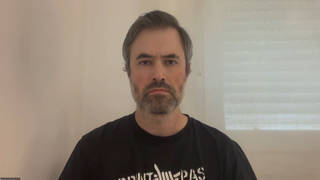
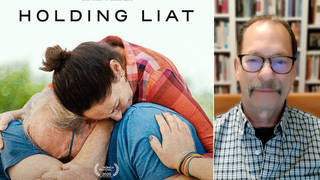
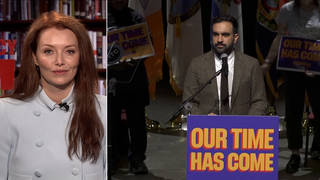
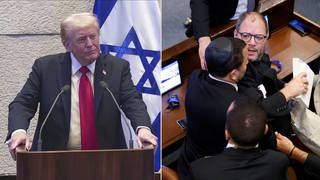



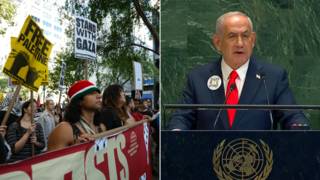


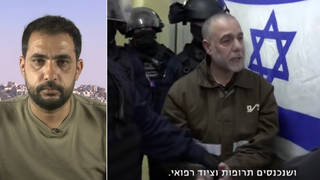
Media Options